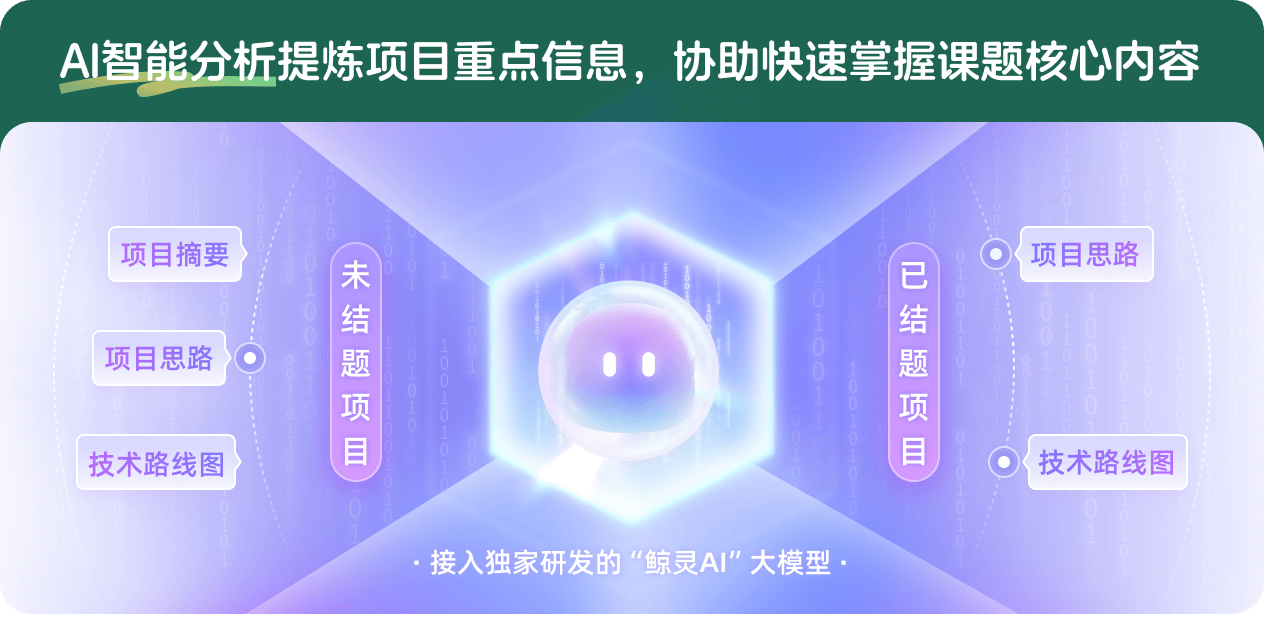用于单细胞温度检测的硅纳米线传感器及其能量转移过程研究
项目介绍
AI项目解读
基本信息
- 批准号:51672284
- 项目类别:面上项目
- 资助金额:62.0万
- 负责人:
- 依托单位:
- 学科分类:E0207.无机非金属半导体与信息功能材料
- 结题年份:2020
- 批准年份:2016
- 项目状态:已结题
- 起止时间:2017-01-01 至2020-12-31
- 项目参与者:曹星星; 金亮亮; 李生阳; 陈敏; 梁森; 卜聪聪; 璩方沐;
- 关键词:
项目摘要
Detecting the temperature of different locations within a single cell is of great significance for understanding the physiological process of the single cell and promoting the biomedical research. The existing temperature-sensitive fluorescence probes have some disadvantages such as photo bleaching, low sensitivity or probe drift in cell. In this proposal, silicon nanowires as acceptor are covalently connected with energy donor---luminescent materials (up conversion nanoparticles or CdSe quantum dots) through temperature-sensitive linkers (DNA hairpin structure or polymer chain) to construct sensors with high sensitivity and inconspicuous drift for temperature of cell. The change of temperature would induce the transform of the linker configuration which determined the energy transfer between energy acceptor (silicon nanowire) and energy donor (luminescent material). As a result, the fluorescence intensities of the sensor would be altered. Moreover, the dependence of the crystal lattice of the luminescent material on the temperature could enhance the differentiation of the fluorescence intensities and further improve the sensitivity of present sensor. Further, the single silicon nanowire sensor for temperature can be immobilized onto the tip of a microneedle and inserted into the specified location of the single cell by a micro manipulator. Measuring the fluorescence intensities of the single nanowire sensor by the confocal fluorescent microscopy, the temperature at the specified location of single cell can be determined with high sensitivity and low drift. In the coming four years, the photophysical process of energy transfer between silicon nanowire and luminescent material would be clarified, the dependence of the sensitivity of present sensor on the linker, luminescence material, as well as the energy transfer efficiency would be revealed. The research results could provide a theoretical foundation and method to develop novel sensors with high sensitivity and low drift for the temperature at the specified location of a single cell, and also give a technical support for understanding physiological process of cell.
检测单细胞内不同区域的温度对理解单个细胞的生理过程和促进生物医学研究具有重要意义。目前,基于温度敏感的荧光探针单细胞温度检测存在光漂白、灵敏度低、探针漂移等急需解决的问题。本项目中,我们拟用温度敏感的连接体(DNA发夹结构或聚合物链)将发光材料(上转换纳米颗粒或CdSe量子点)共价连接在硅纳米线表面,通过温度调控硅纳米线与发光材料之间的能量转移,建立温度与发光材料荧光性质的关系,构建高灵敏温度传感器。进一步将单根硅纳米线温度传感器固定于微针尖端,通过微操作系统将其插入细胞特定部位,利用高分辨荧光共聚焦装置,实现细胞内特定部位温度的高灵敏、低漂移检测。并在此过程中,阐明硅纳米线与发光材料之间能量转移的光物理过程;揭示连接体结构、发光材料类型、能量转移效率与传感器灵敏度的关系,为发展单细胞特定区域温度高灵敏、高空间稳定性检测的传感器提供理论基础和方法,为深入理解细胞生理过程提供技术支撑。
结项摘要
高灵敏、高空间分辨地检测单细胞的温度,对从单细胞水平理解温度相关的生理过程和疾病产生的机理等具有重要意义。针对现有的荧光温度传感器在细胞原位检测过程中存在的易发生光漂白、灵敏度有限及纳米颗粒空间漂移导致的不能准确测量等问题,结合一维纳米结构在单细胞检测中的优势,本项目提出了以一维纳米结构为基底,构建基于能量转移的一维纳米结构荧光温度传感器,实现单细胞特定部位温度的高灵敏、高空间分辨检测的目标。通过项目组全体成员 4 年的共同努力,发展了基于DNA发夹结构的银纳米团簇温度计,在此基础上通过DNA发夹结构将发光分子共价修饰在银纳米线表面,构建了基于银纳米线的温度敏感的能量转移体系,实现了对单个细胞温度变化的检测,很好地解决了纳米颗粒在用于单细胞检测过程中空间漂移的问题;发展了基于苝酰亚胺衍生物的纳米胶囊荧光温度计,有效地解决了非水溶性温敏有机分子不能用于细胞检测的问题;将基于聚(N-异丙基丙烯酰胺)(PNIPAM)的共聚高分子片段与羧基化的ZnCdSe/ZnS量子点以鸡尾酒的方式进行组装,获得了基于PNIAPM的宽量程的荧光温度计,有效解决了基于PNIAPAM的温度计量程过窄的问题;制备了基于荧光寿命的金纳米团簇线粒体靶向的荧光温度计和硅纳米线荧光温度传感器,很好的解决了荧光强度检测过程受浓度、光源及检测器等波动的影响,并将单根硅纳米线荧光温度传感器用于单细胞温度的检测,实现了对单细胞温度的高灵敏、高稳定、高空间分辨检测。构建的单根硅纳米线荧光温度传感器与标准铂电阻温度计比对,多次温度测量的误差均小于±0.2℃。同时,我们将检测目标扩展到次氯酸、钙离子等,实现了单根纳米线对单个巨噬细胞内源性次氯酸和单个海马神经元胞体和神经突钙离子的高空间分辨检测。以上研究不仅为单细胞特定部位温度的检测提供了可靠的工具,也为进一步实现单个细胞特定部位多目标检测提供了新的方法和实验依据。相关研究结果已发表SCI研究论文19篇,申请中国发明专利12项,其中5项已获授权。
项目成果
期刊论文数量(20)
专著数量(0)
科研奖励数量(0)
会议论文数量(0)
专利数量(12)
A facile fabrication of high-quality Si/Cu2O nanowire arrays for photoelectrochemical water splitting
轻松制造用于光电化学水分解的高质量 Si/Cu2O 纳米线阵列
- DOI:10.1016/j.matlet.2017.03.124
- 发表时间:2017-06
- 期刊:Materials Letters
- 影响因子:3
- 作者:Shaoyang Zhang;Guangwei She;Lixuan Mu;Wensheng Shi
- 通讯作者:Wensheng Shi
Template-free electrochemical synthesis of Cd/CdTe core/shell nanowires and CdTe nanotubes
Cd/CdTe核/壳纳米线和CdTe纳米管的无模板电化学合成
- DOI:10.1039/d0ce00519c
- 发表时间:2020-06
- 期刊:CrystEngComm
- 影响因子:3.1
- 作者:Guangwei She;Tong Cai;Lixuan Mu;Wensheng Shi
- 通讯作者:Wensheng Shi
A Novel Ratiometric Fluorescent Probe for Highly Sensitive and Selective Detection of beta-Galactosidase in Living Cells
一种新型比率荧光探针,用于高灵敏度和选择性检测活细胞中的 β-半乳糖苷酶
- DOI:--
- 发表时间:2019
- 期刊:Chinese Journal of Chemistry
- 影响因子:5.4
- 作者:Min Chen;Lixuan Mu;Xingxing Cao;Guangwei She;Wensheng Shi
- 通讯作者:Wensheng Shi
Si-H induced synthesis of Si/Cu2O nanowire arrays for photoelectrochemical water splitting
Si-H诱导合成Si/Cu2O纳米线阵列用于光电化学水分解
- DOI:10.1088/1361-6528/aa9731
- 发表时间:2018-01
- 期刊:Nanotechnology
- 影响因子:3.5
- 作者:Shaoyang Zhang;Guangwei She;Shengyang Li;Lixuan Mu;Wensheng Shi
- 通讯作者:Wensheng Shi
Nanowire-Based Fluorescence Thermometer for a Single Cell
基于纳米线的单细胞荧光温度计
- DOI:--
- 发表时间:2018
- 期刊:ACS Applied Materials & Interfaces
- 影响因子:9.5
- 作者:Congcong Bu;Lixuan Mu;Xingxing Cao;Min Chen;Guangwei She;Wensheng Shi
- 通讯作者:Wensheng Shi
数据更新时间:{{ journalArticles.updateTime }}
{{
item.title }}
{{ item.translation_title }}
- DOI:{{ item.doi || "--"}}
- 发表时间:{{ item.publish_year || "--" }}
- 期刊:{{ item.journal_name }}
- 影响因子:{{ item.factor || "--"}}
- 作者:{{ item.authors }}
- 通讯作者:{{ item.author }}
数据更新时间:{{ journalArticles.updateTime }}
{{ item.title }}
- 作者:{{ item.authors }}
数据更新时间:{{ monograph.updateTime }}
{{ item.title }}
- 作者:{{ item.authors }}
数据更新时间:{{ sciAawards.updateTime }}
{{ item.title }}
- 作者:{{ item.authors }}
数据更新时间:{{ conferencePapers.updateTime }}
{{ item.title }}
- 作者:{{ item.authors }}
数据更新时间:{{ patent.updateTime }}
其他文献
高度有序ZnO-SnO_2异质外延枝状纳米结构的制备及其光催化性质研究
- DOI:--
- 发表时间:2013
- 期刊:影像科学与光化学
- 影响因子:--
- 作者:凌世婷;佘广为;穆丽璇;师文生
- 通讯作者:师文生
Germanium-based micrometer/nanometer cone array fluorescence pH sensor and application
锗基微米/纳米锥阵列荧光pH传感器及应用
- DOI:--
- 发表时间:2011
- 期刊:
- 影响因子:--
- 作者:佘广为;刘运宇;师文生;穆丽璇;苗荣
- 通讯作者:苗荣
其他文献
{{
item.title }}
{{ item.translation_title }}
- DOI:{{ item.doi || "--" }}
- 发表时间:{{ item.publish_year || "--"}}
- 期刊:{{ item.journal_name }}
- 影响因子:{{ item.factor || "--" }}
- 作者:{{ item.authors }}
- 通讯作者:{{ item.author }}

内容获取失败,请点击重试

查看分析示例
此项目为已结题,我已根据课题信息分析并撰写以下内容,帮您拓宽课题思路:
AI项目摘要
AI项目思路
AI技术路线图

请为本次AI项目解读的内容对您的实用性打分
非常不实用
非常实用
1
2
3
4
5
6
7
8
9
10
您认为此功能如何分析更能满足您的需求,请填写您的反馈:
师文生的其他基金
用于单个神经细胞Fyn信号通路探测的硅纳米线光控释放器件研究
- 批准号:52172107
- 批准年份:2021
- 资助金额:58.00 万元
- 项目类别:面上项目
用于单个神经细胞Fyn信号通路探测的硅纳米线光控释放器件研究
- 批准号:
- 批准年份:2021
- 资助金额:58 万元
- 项目类别:面上项目
用于光电化学电池的一维Si纳米结构复合光电极研究
- 批准号:91333119
- 批准年份:2013
- 资助金额:90.0 万元
- 项目类别:重大研究计划
半导体纳米结构的表面增强拉曼散射效应研究及传感应用探索
- 批准号:51272258
- 批准年份:2012
- 资助金额:80.0 万元
- 项目类别:面上项目
定向氧化锌纳米管阵列的可控制备及其持续光电导效应研究
- 批准号:10874189
- 批准年份:2008
- 资助金额:38.0 万元
- 项目类别:面上项目
基于硅纳米线的光响应Zn离子和Hg离子化学传感器研究
- 批准号:50772117
- 批准年份:2007
- 资助金额:31.0 万元
- 项目类别:面上项目
相似国自然基金
{{ item.name }}
- 批准号:{{ item.ratify_no }}
- 批准年份:{{ item.approval_year }}
- 资助金额:{{ item.support_num }}
- 项目类别:{{ item.project_type }}
相似海外基金
{{
item.name }}
{{ item.translate_name }}
- 批准号:{{ item.ratify_no }}
- 财政年份:{{ item.approval_year }}
- 资助金额:{{ item.support_num }}
- 项目类别:{{ item.project_type }}




















